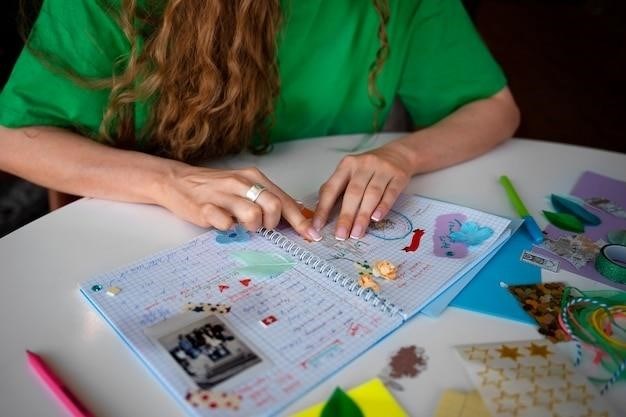Complete Canadian Curriculum⁚ Grade 2
Discover the complete Canadian Grade 2 curriculum․ Downloadable PDF resources offer comprehensive coverage of math, English, social studies, and science․ Engage in enriching activities designed for fun and effective learning․ Access free samples and explore enriched editions․
Subject Areas Covered
The Complete Canadian Curriculum for Grade 2 provides a comprehensive and integrated learning experience across four key subject areas⁚ Mathematics, English Language Arts, Social Studies, and Science․ Each subject is meticulously designed to build a strong foundation in fundamental concepts and essential skills․ The math curriculum focuses on number sense, operations, measurement, and geometry, while the English Language Arts component emphasizes reading comprehension, writing skills, and vocabulary development․ Social Studies introduces students to Canadian history, geography, and civics, fostering a sense of national identity and global awareness․ Finally, the science curriculum sparks curiosity and inquiry through engaging explorations of the natural world, covering topics in life science, physical science, and earth and space science․ This integrated approach ensures a holistic and well-rounded educational experience for young learners․

Availability of Free PDF Downloads
While the complete Canadian Grade 2 curriculum isn’t freely available as a single, comprehensive PDF download from a single, central source, various resources offer free downloadable materials․ Many publishers provide sample chapters or excerpts of their Grade 2 workbooks in PDF format, allowing parents and educators to preview the content and teaching style․ These samples often showcase specific units or lessons within the curriculum’s subject areas․ Additionally, some websites offer free printable worksheets and activities aligned with the Canadian Grade 2 curriculum, providing supplementary materials for reinforcement and practice․ It’s important to note that these free resources typically represent a portion of the overall curriculum and should be considered supplementary to a complete learning program․ Always check the source’s credibility and alignment with Canadian educational standards before utilizing these materials․
Curriculum Structure and Content
The Canadian Grade 2 curriculum generally follows a structured approach, encompassing core subjects like mathematics, English language arts, science, and social studies․ Math focuses on number sense, operations, measurement, and geometry, building upon foundational skills from Grade 1․ English language arts emphasizes reading comprehension, writing skills, vocabulary development, and oral communication․ Science introduces basic concepts in life science, physical science, and earth and space science through hands-on activities and exploration․ Social studies explores Canadian history, geography, and civics, fostering an understanding of communities and citizenship․ The curriculum often integrates these subjects, connecting concepts across disciplines to enhance learning and understanding․ Specific content and emphasis may vary slightly across provinces and territories, reflecting regional contexts and priorities․ The overall goal is to provide a balanced and comprehensive education for young learners, preparing them for future academic success․
Comparison with Provincial Curricula

While a “complete Canadian curriculum” aims for national coverage, it’s crucial to remember that Canada’s education system is decentralized․ Each province and territory develops its own curriculum, leading to variations in specific learning objectives, content, and assessment methods․ A nationally-focused resource might present a generalized overview, potentially differing from a specific province’s detailed expectations․ For instance, the emphasis on certain historical events or geographical regions could vary․ Similarly, the approach to teaching math concepts or the specific literacy skills emphasized might differ․ Parents and educators should always cross-reference any nationally-oriented curriculum with their province’s official curriculum guidelines to ensure complete alignment․ This comparison helps guarantee that students are meeting all provincial learning standards and expectations․ Using supplemental resources alongside the provincial curriculum can enrich learning but shouldn’t replace the core curriculum’s requirements․ Understanding these differences is vital for successful learning outcomes․
Learning Objectives and Skills
The Grade 2 curriculum aims to build upon foundational skills established in earlier grades․ Key learning objectives in math focus on solidifying number sense to 1000, mastering addition and subtraction, and introducing basic multiplication and division concepts․ Students develop problem-solving skills through word problems and hands-on activities․ In English Language Arts, the emphasis shifts towards reading comprehension, fluency, and writing skills․ Students learn to write simple sentences and paragraphs, expressing their thoughts clearly and creatively․ Social studies introduces students to Canadian history, geography, and diverse cultures, fostering a sense of belonging and understanding of their country․ Science focuses on observation, exploration, and basic scientific inquiry․ Students might conduct simple experiments and learn about living things, the environment, and basic physical concepts․ These integrated skills cultivate a well-rounded education, preparing students for future academic success and promoting lifelong learning․
Math Curriculum Details for Grade 2
The Grade 2 math curriculum builds upon the fundamental concepts introduced in the previous year․ Students will delve deeper into number sense, working with numbers up to 1000, practicing skip counting, and developing a strong understanding of place value․ Addition and subtraction skills are reinforced through various methods, including mental math, using manipulatives, and solving word problems․ The curriculum introduces basic geometry concepts like shapes and spatial reasoning, helping children visualize and understand geometric relationships․ Measurement is explored through activities involving length, weight, and capacity, using standard and non-standard units․ Data management is also touched upon, with simple activities involving collecting, organizing, and interpreting data․ The focus is on developing conceptual understanding and procedural fluency, fostering problem-solving abilities and critical thinking skills․ The curriculum incorporates a variety of learning styles, incorporating hands-on activities, games, and real-world applications to make learning engaging and relevant․
English Language Arts in Grade 2
The Grade 2 English Language Arts curriculum emphasizes reading comprehension and fluency․ Students refine their phonics skills, decoding increasingly complex words and developing strategies for understanding unfamiliar vocabulary․ Reading comprehension is enhanced through a variety of activities, including close reading, discussions, and independent reading․ Writing skills are developed through various forms, such as narratives, descriptive pieces, and informational reports․ Students learn to organize their thoughts, use proper grammar and punctuation, and express themselves clearly and creatively․ Oral communication skills are honed through participation in discussions, presentations, and storytelling․ The curriculum fosters a love of reading through exposure to a wide range of literature, including picture books, chapter books, and poetry․ Students learn to appreciate different literary genres and styles, developing their critical thinking and analytical skills․ The emphasis is on developing a strong foundation in literacy, enabling students to communicate effectively and confidently in both written and oral forms․
Social Studies and Science in Grade 2
Grade 2 Social Studies introduces students to their local community, exploring its history, geography, and culture․ They learn about diverse communities within Canada and begin to understand the concept of citizenship․ Students develop their map skills, learning to interpret maps and understand basic geographical concepts․ They explore the interactions between people and their environment, fostering an appreciation for sustainability and responsible resource management․ Science in Grade 2 builds upon foundational concepts, encouraging inquiry-based learning and hands-on exploration․ Students conduct simple experiments, make observations, and record data, developing their scientific thinking skills․ Topics may include the life cycles of plants and animals, the properties of matter, and basic weather patterns․ The curriculum emphasizes the development of scientific literacy, fostering curiosity and a desire to learn more about the natural world․ A focus on observation, experimentation, and data analysis lays a strong foundation for future scientific studies․ These subjects encourage critical thinking and problem-solving․
Resources for Parents and Educators
Numerous resources are available to support parents and educators in their efforts to enhance Grade 2 learning․ Websites like Education․com offer teacher-created activities aligned with the curriculum, bringing learning to life with engaging, creative resources․ Online platforms provide access to downloadable workbooks and curriculum guides, supplementing classroom learning with additional practice and reinforcement․ Many publishers offer digital versions of their workbooks, making learning more accessible and convenient․ These digital resources often include interactive elements and assessments, providing valuable feedback to both students and educators․ For parents, these resources can be invaluable tools to support their children’s learning at home․ They can use these resources to reinforce concepts learned in the classroom, provide additional practice, and engage in fun, educational activities with their children․ Educators can use these resources to supplement their lesson plans, provide differentiated instruction, and offer students additional support based on their individual needs․ The availability of these resources ensures that learning is not limited to the classroom but can extend to the home, enriching the overall learning experience․
Alternative Curriculum Resources
Beyond the standard Canadian curriculum, various alternative resources cater to diverse learning styles and needs․ “Math Mammoth Grade 2 Canadian Version,” available as a digital download, offers a comprehensive math curriculum with worktexts, tests, and a worksheet generator․ Canadian Curriculum Press provides ebooks covering reading, writing, and math for Pre-K to Grade 4, offering digital alternatives to traditional workbooks․ These resources provide flexibility and choice for parents and educators seeking supplementary materials or alternative approaches to teaching․ Some websites offer free downloadable checklists organizing the curriculum by grade level, simplifying navigation and planning․ These tools aid in tracking student progress and ensuring alignment with learning objectives․ Remember to always verify the credibility and alignment with provincial standards before adopting any alternative resource․ Consider factors such as learning styles, individual student needs, and overall curriculum goals when selecting supplementary materials․ A blend of traditional and alternative resources can often create a more well-rounded and engaging learning experience;